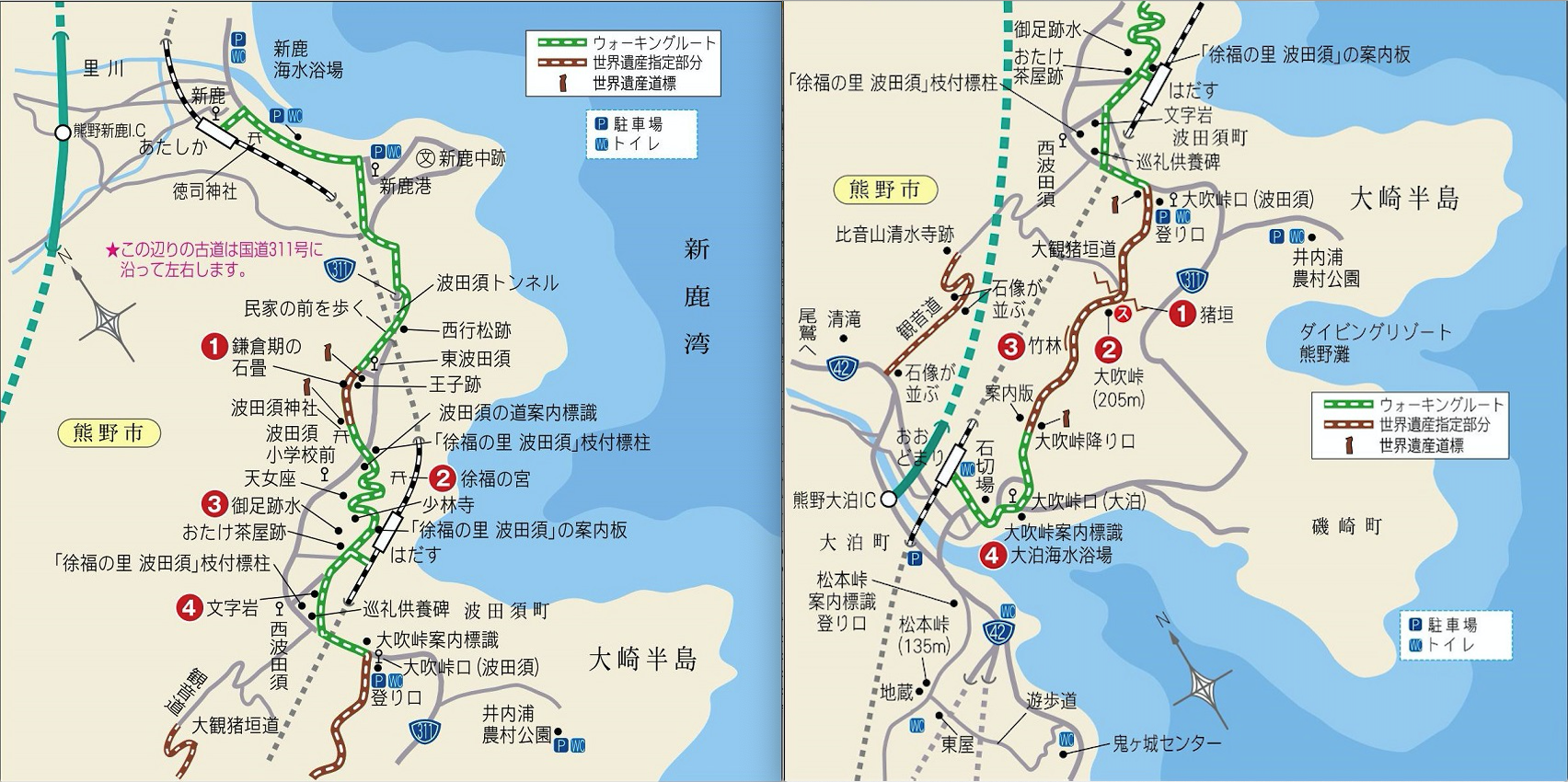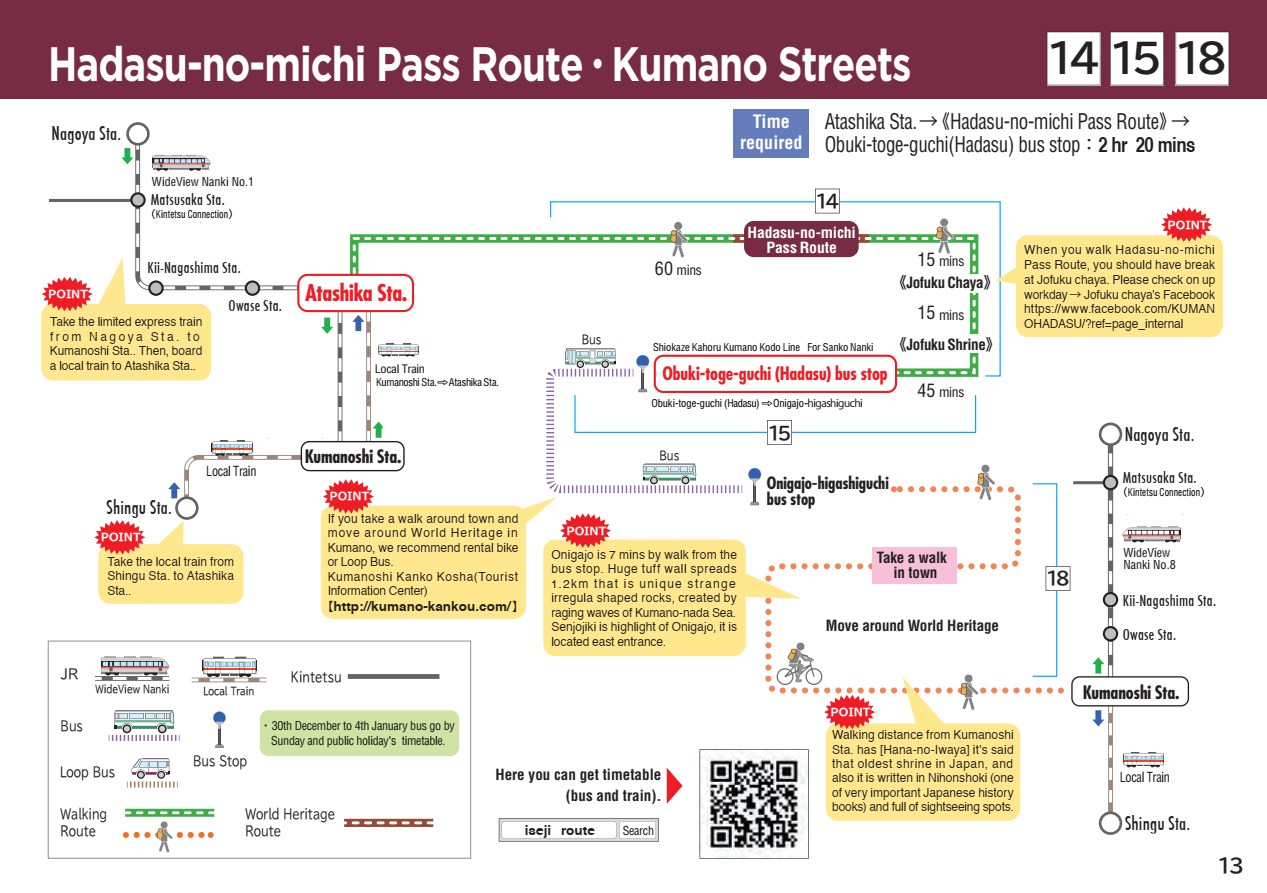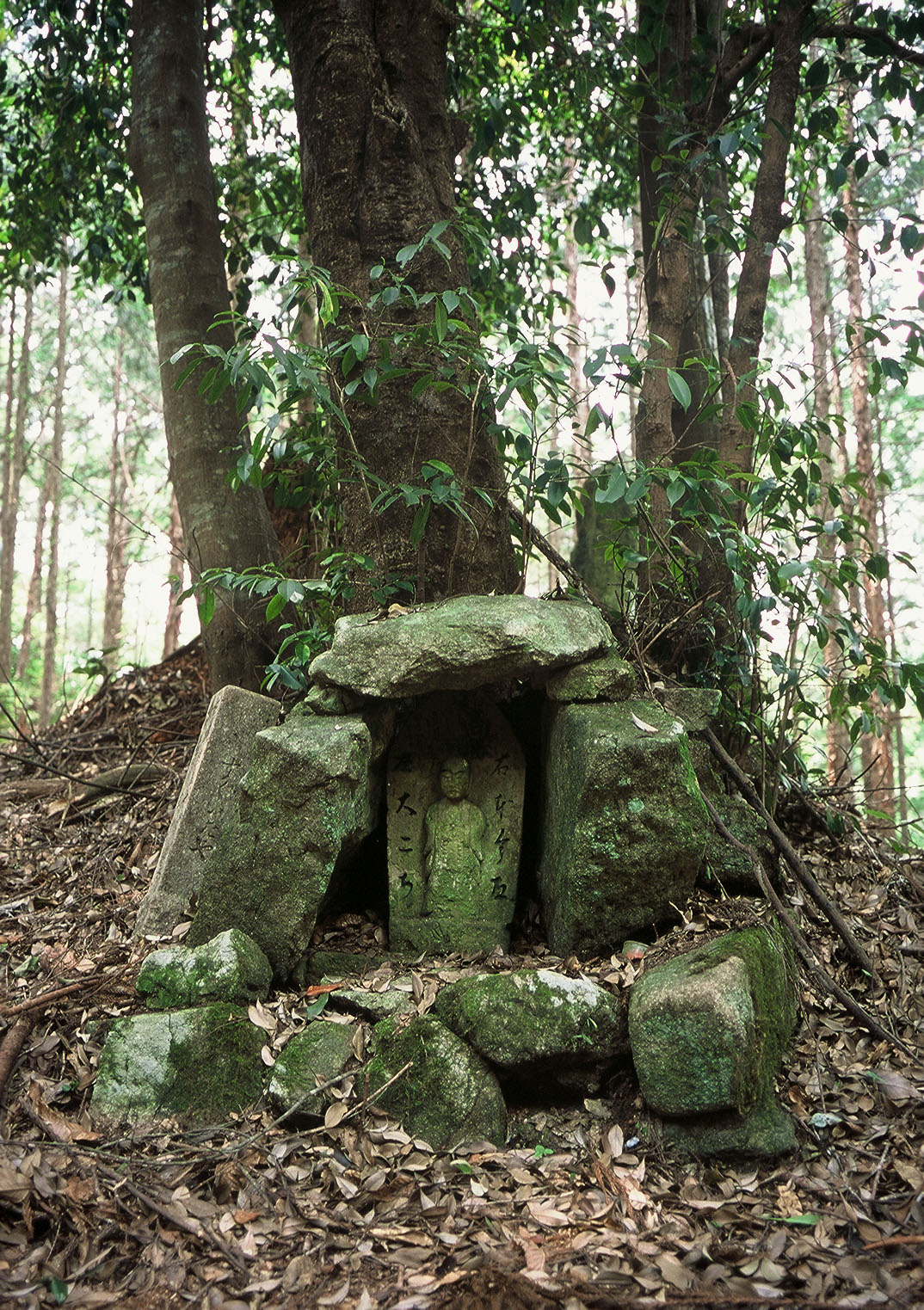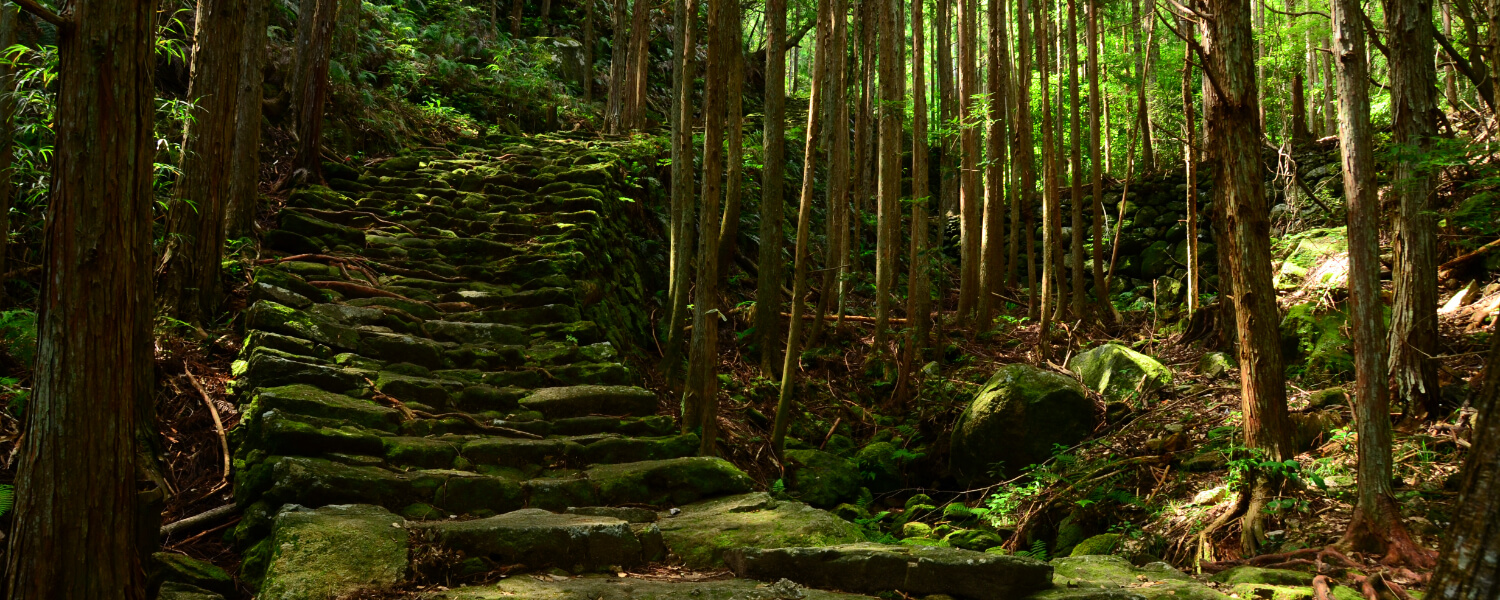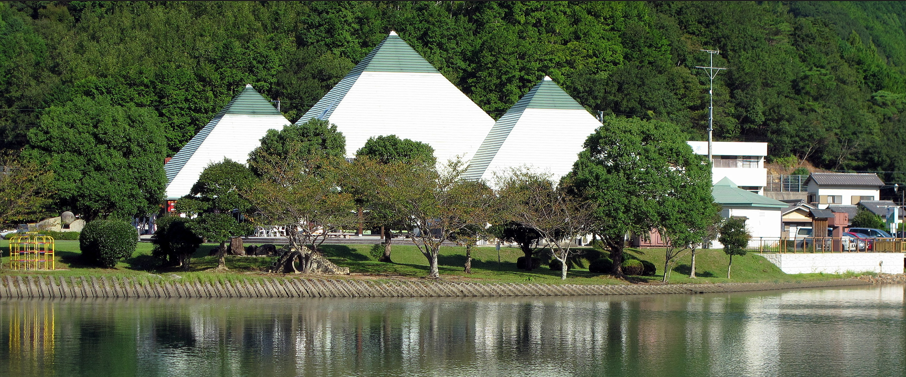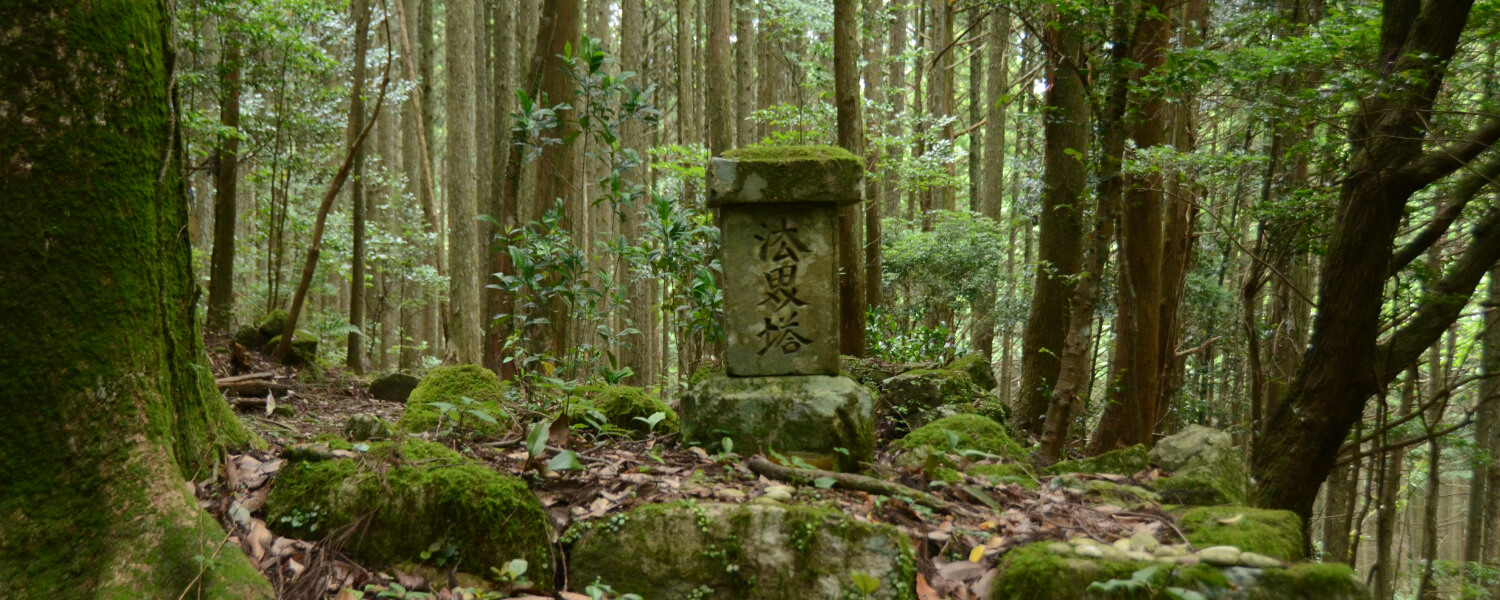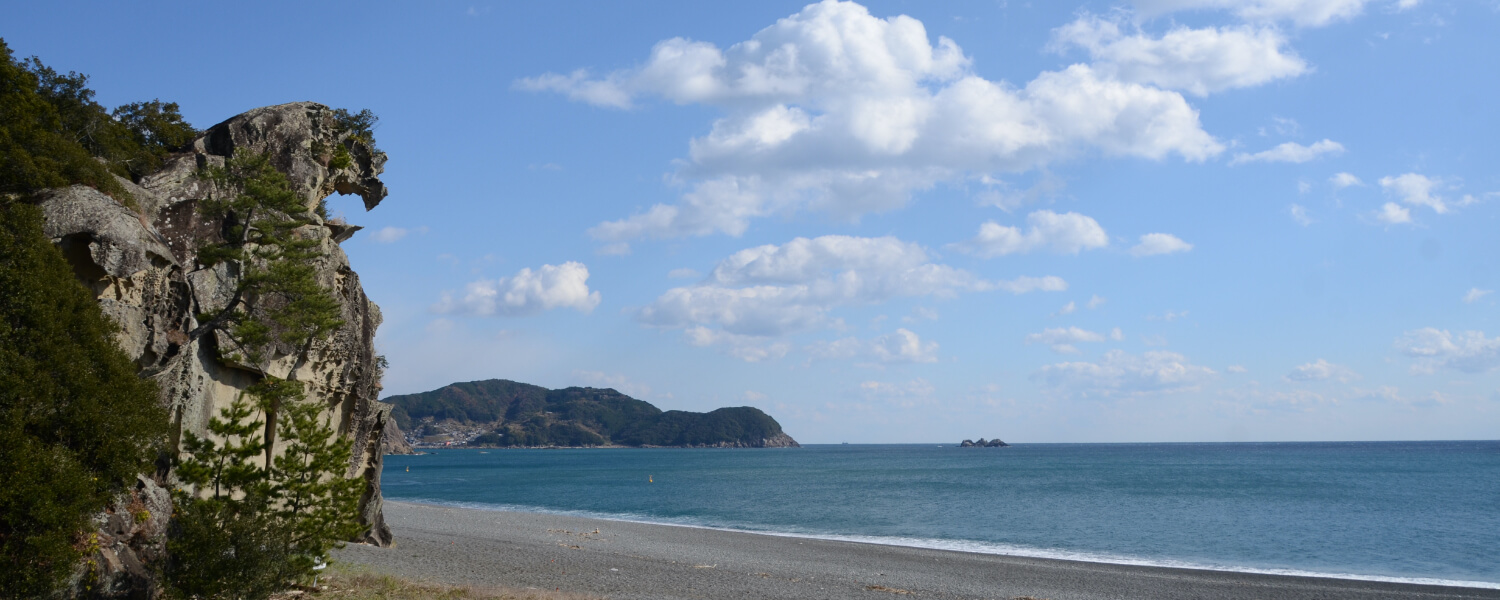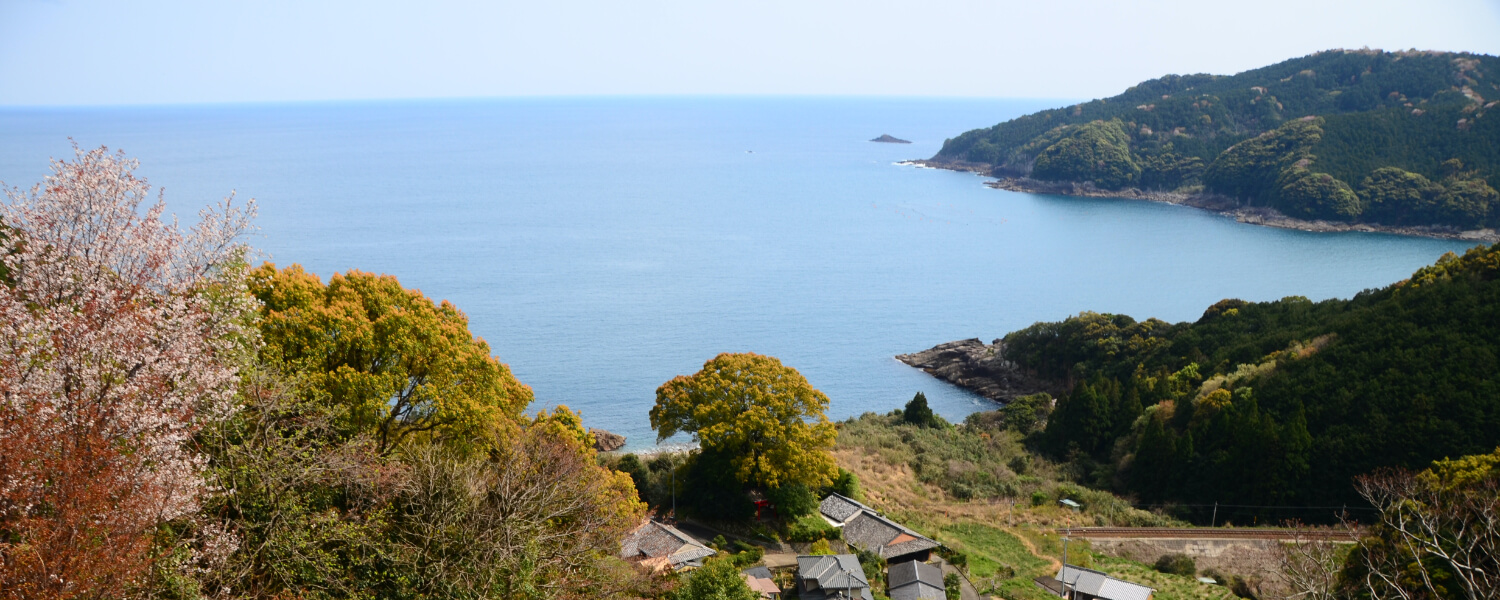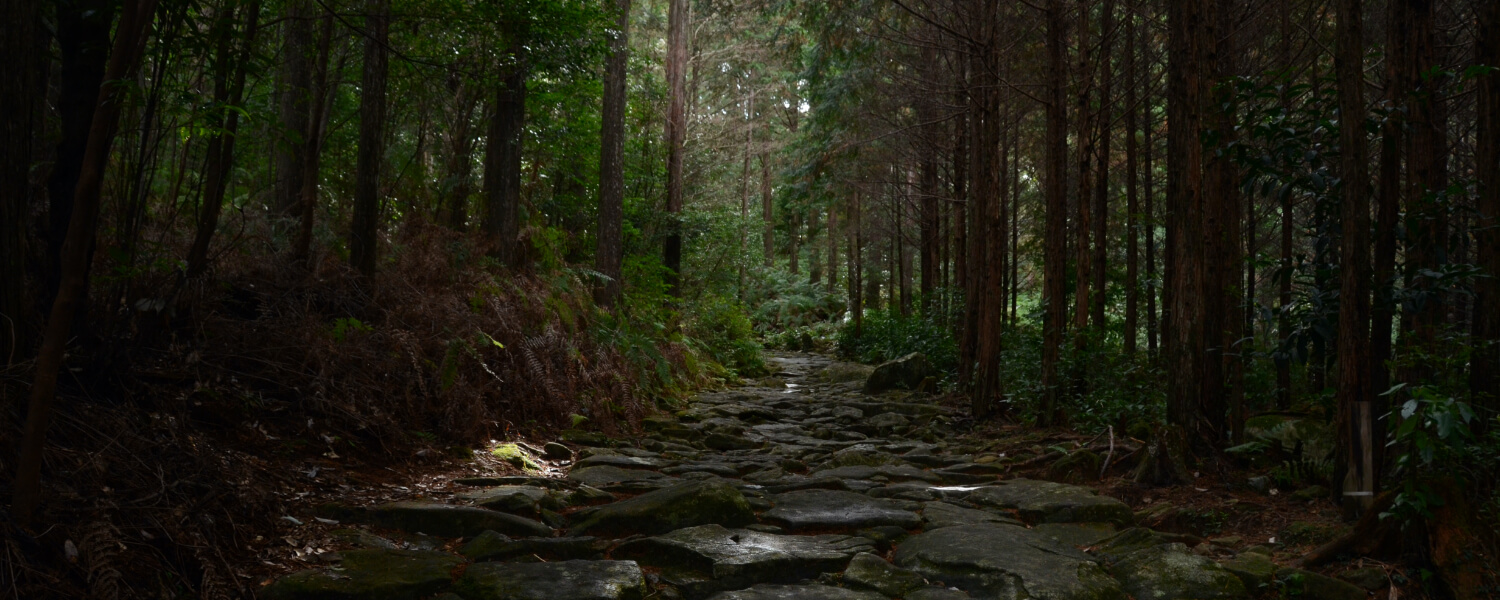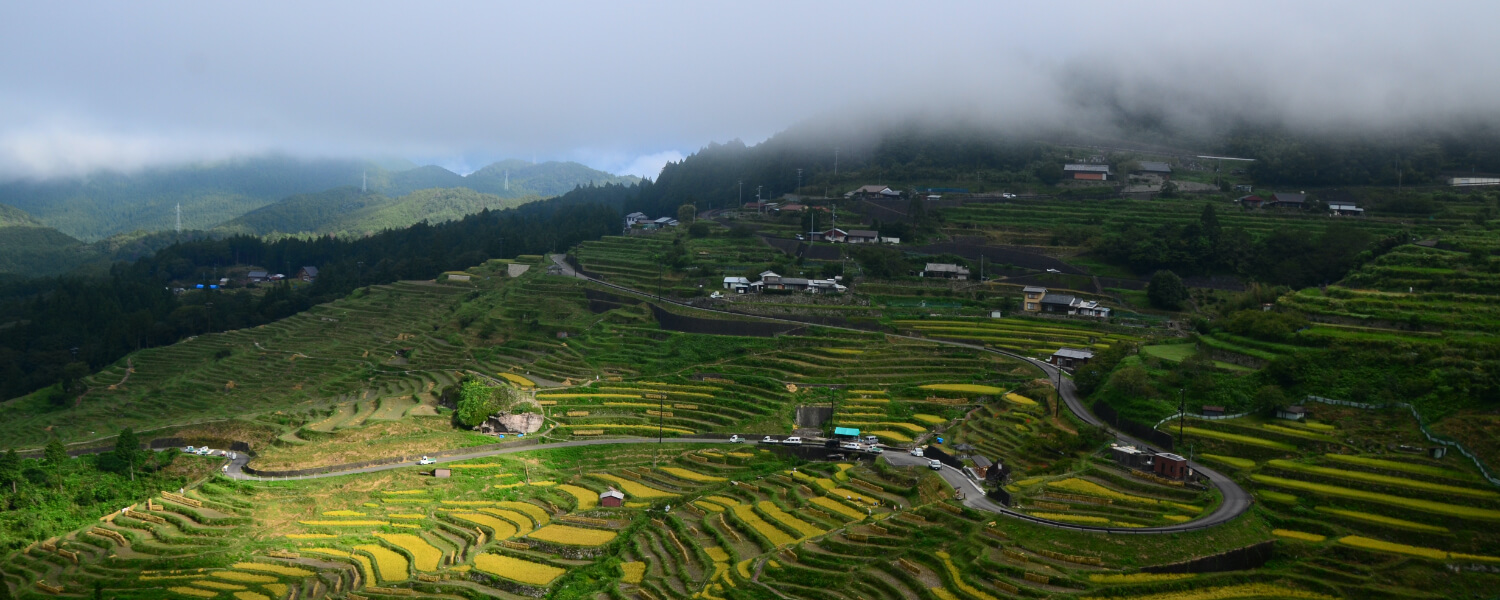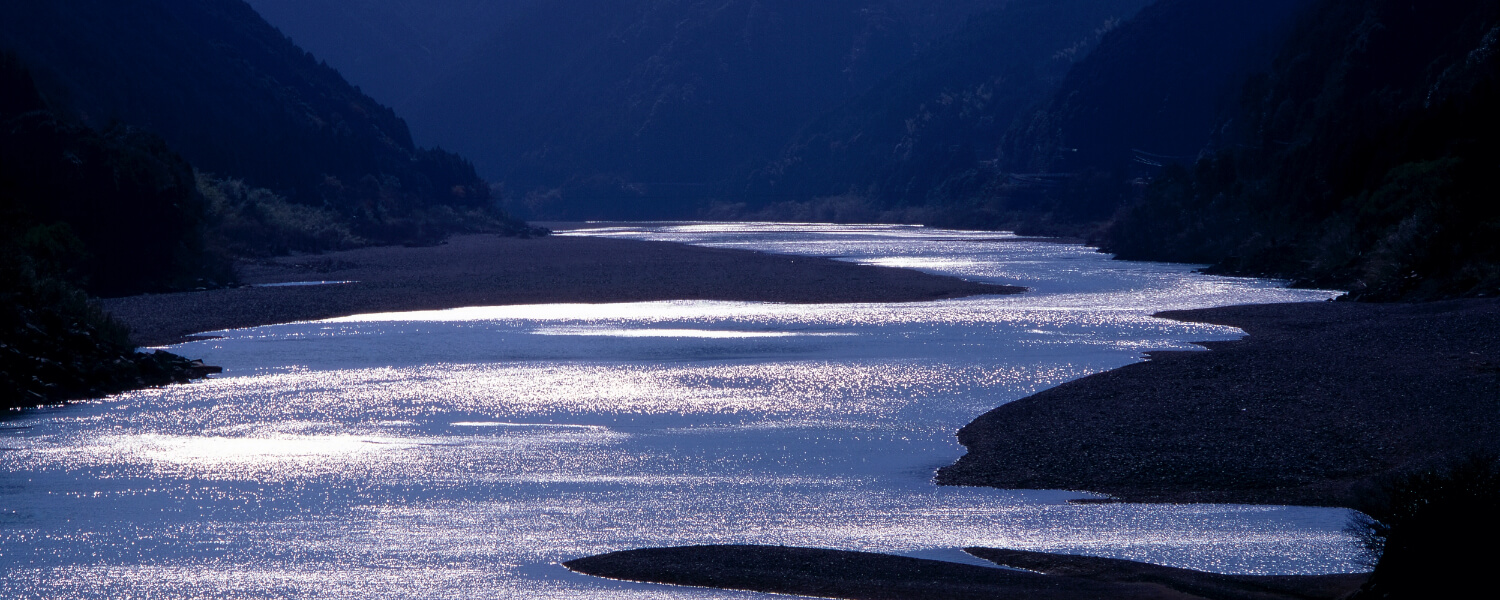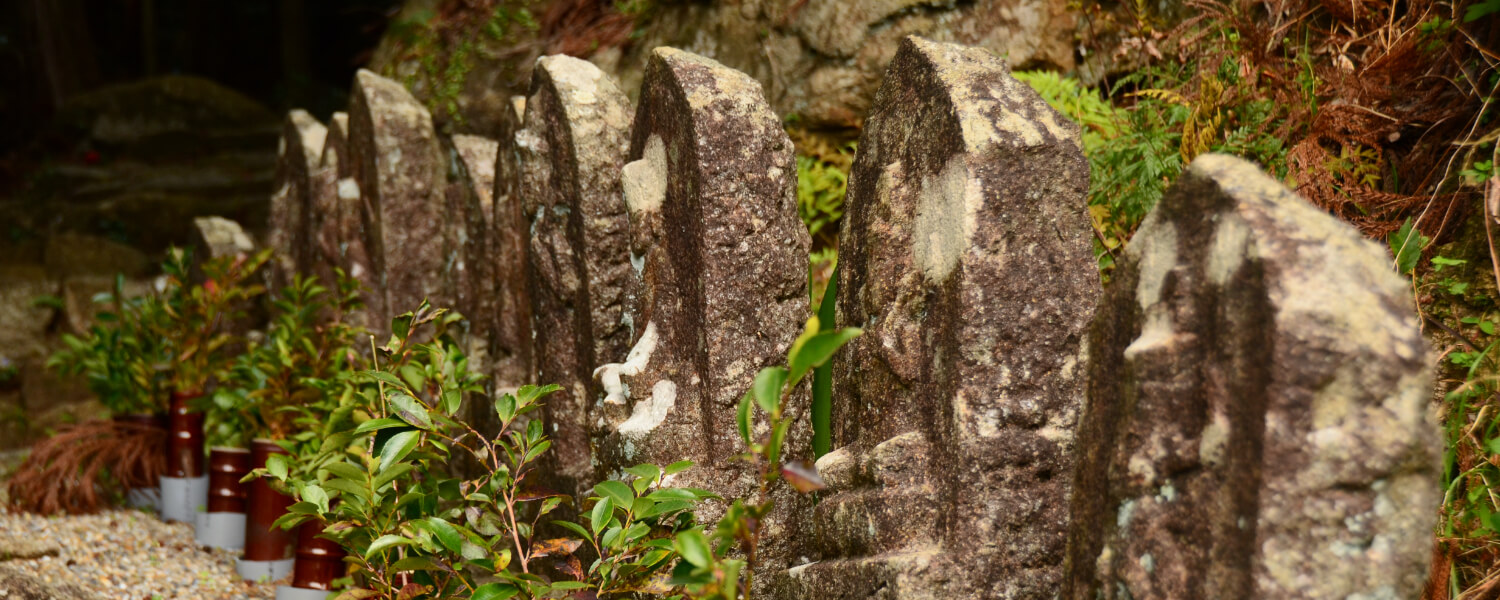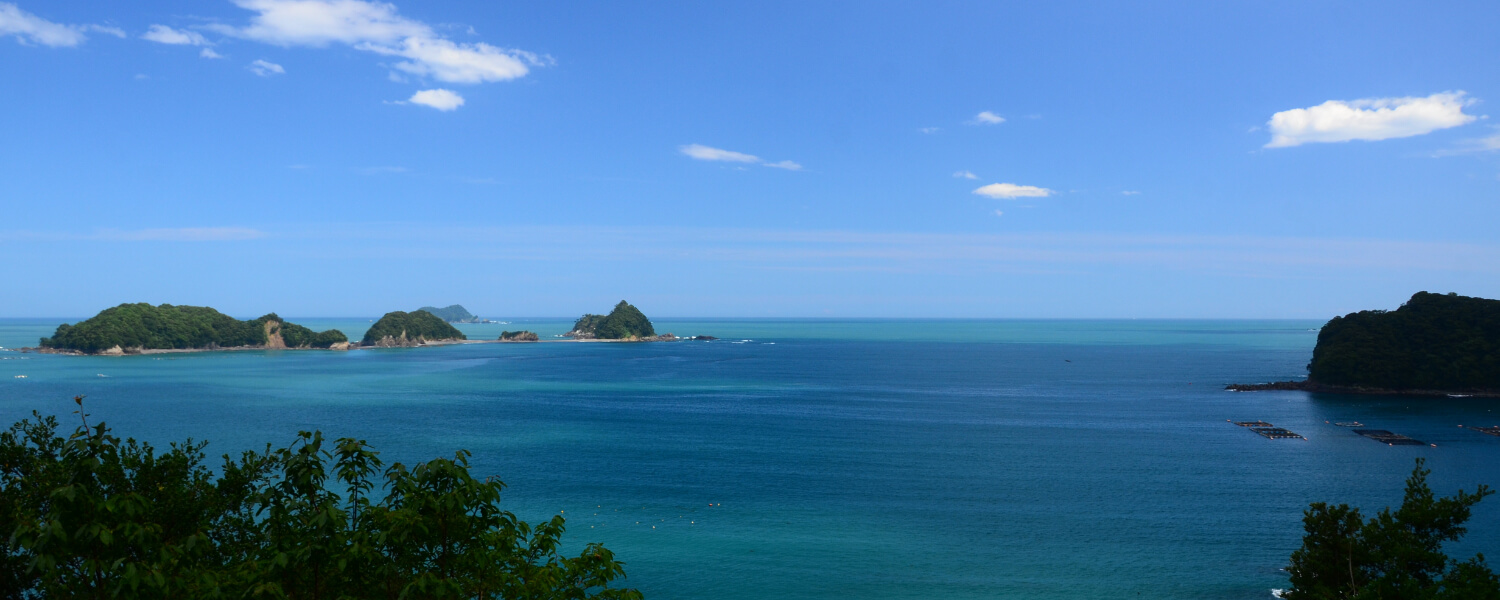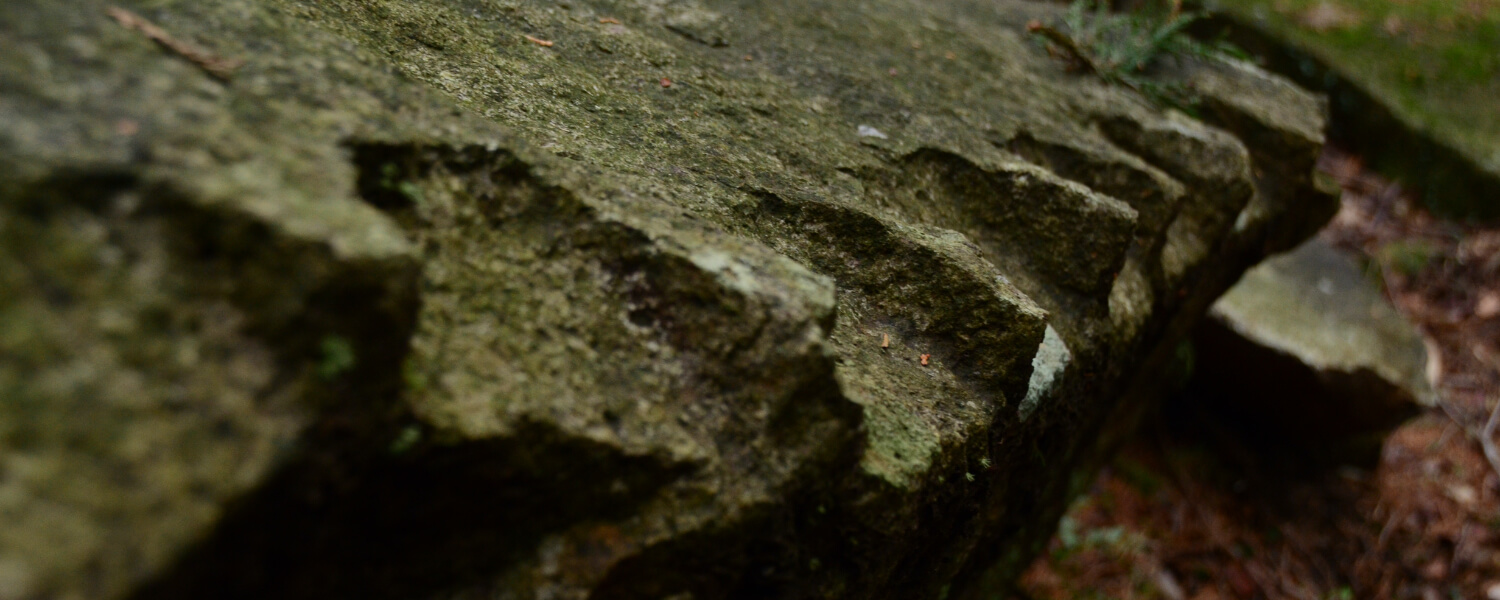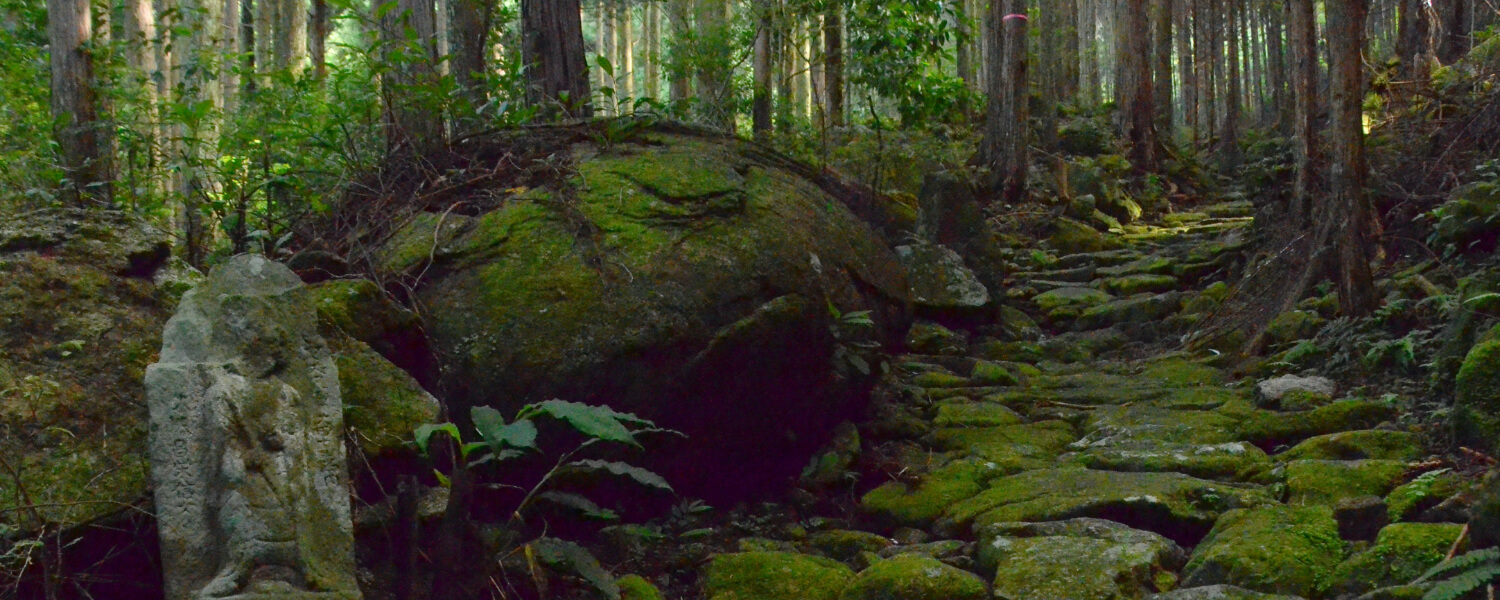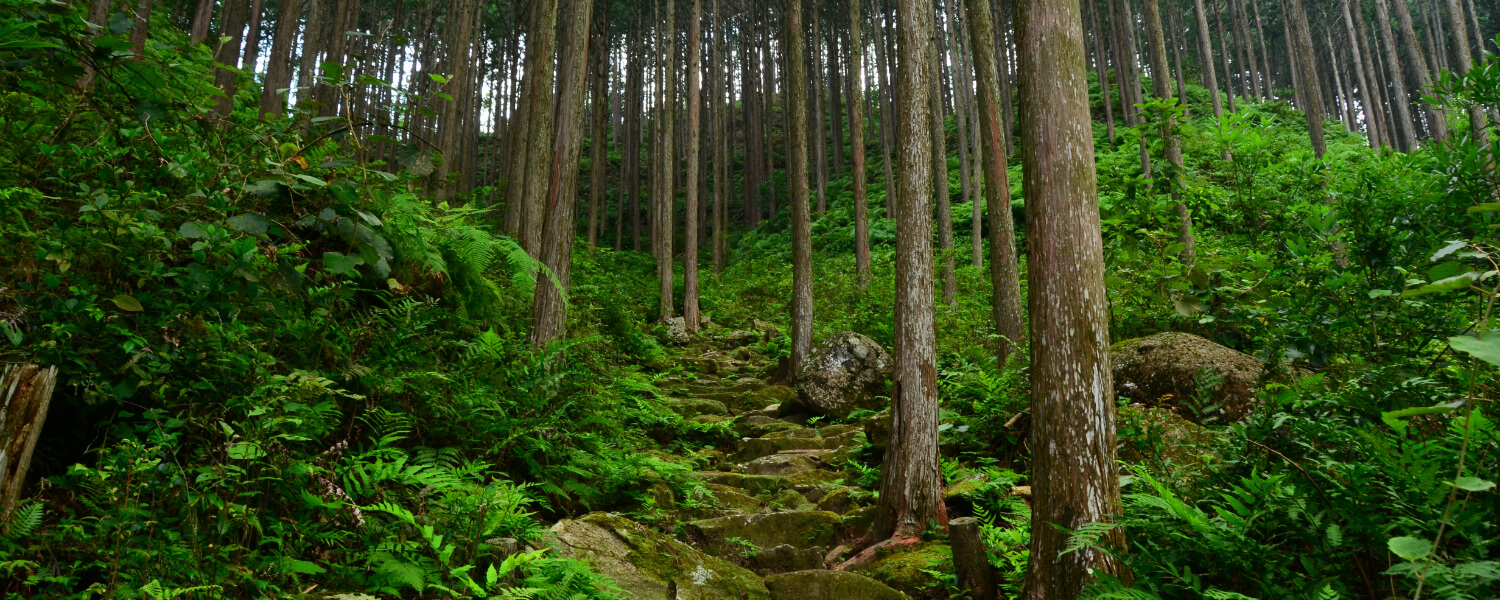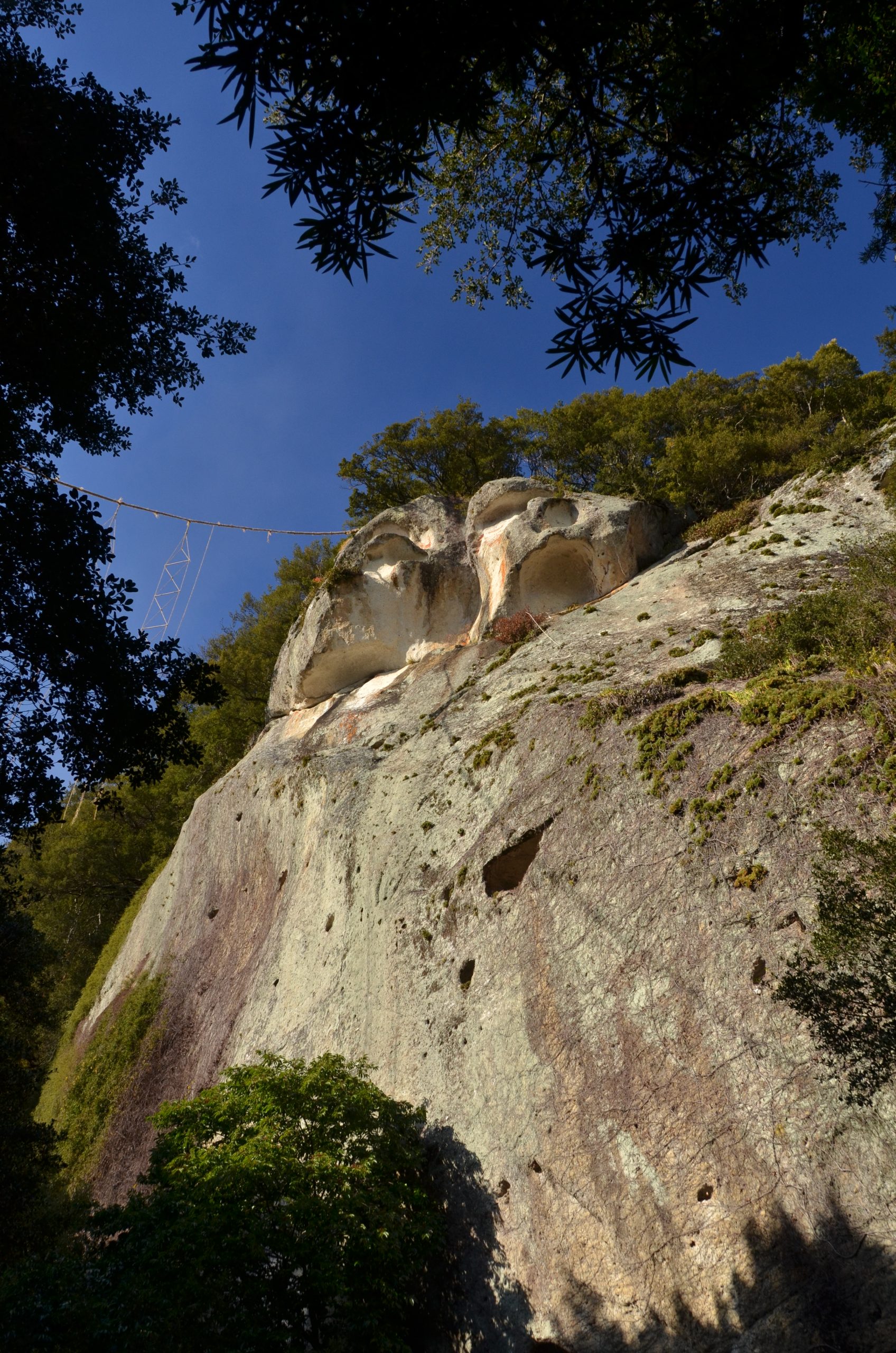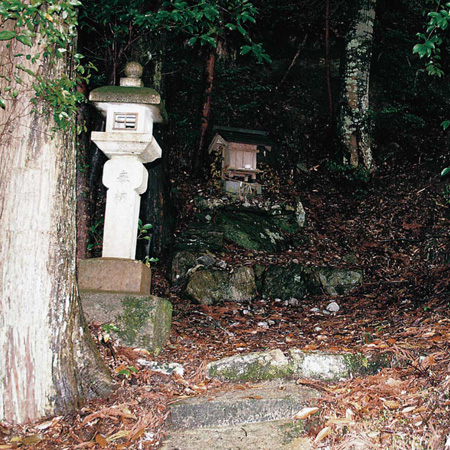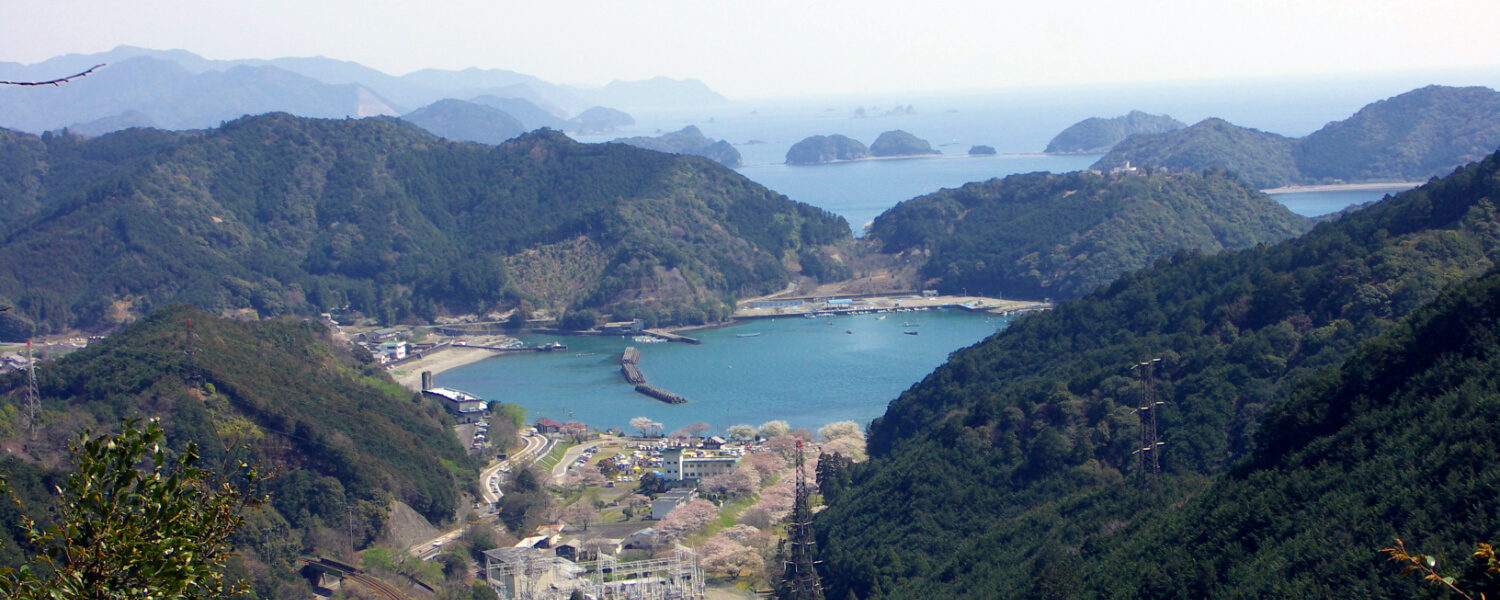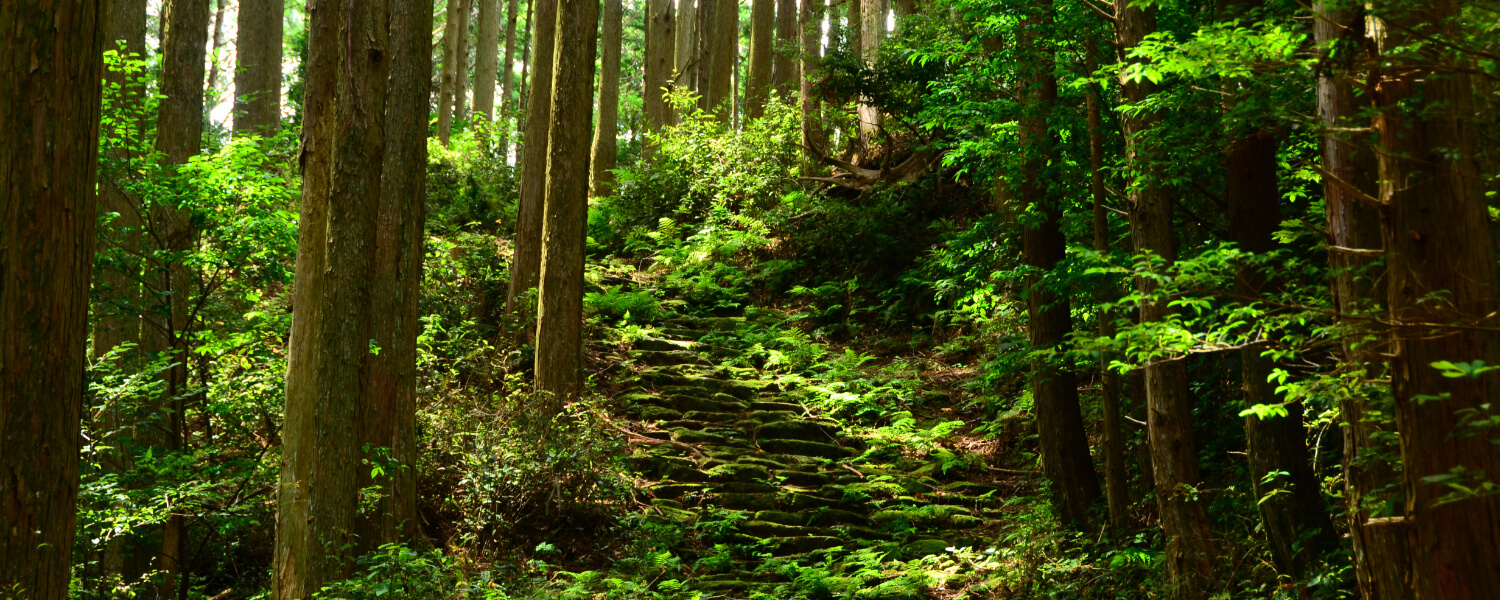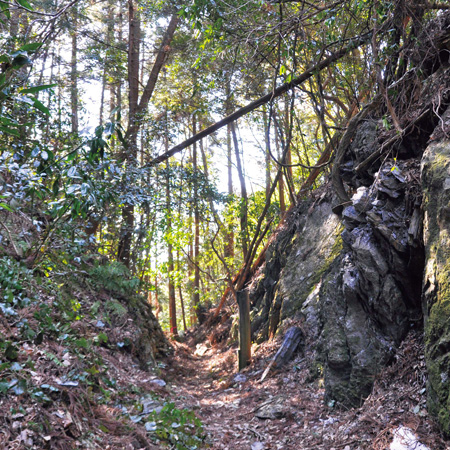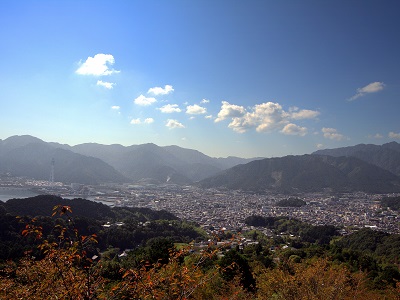14 Hadasu-no-Michi・Obuki-toge Pass
Hadasu-no-Michi・Obuki-toge Pass
Walking time
About 3 hours
Distance
Around 8km (From JR Atashika Station to JR Odomari Station)
sea level
205m
Route features
Hadasu-no-michi: Hadasu is said to be the place where the illustrious Royal Doctor Jofuku came from China in search of the elixir of life. The mountain slope is dotted with terraced rice paddies and houses, and with the many legends and historical spots here, you can experience history in this small hamlet. A species of tree that Jofuku found to have medical properties now grows at Hadasu and Jofuku Shrines. Obuki-toge Pass: This route passes through an extensive bamboo grove which is rare on the Kumano Kodo. The gentle slopes, wonderful views and peaceful atmosphere make this an enjoyable walk. After descending the mountain, the view of the white sandy coast will melt away any fatigue you may have from the walk.
Route highlights
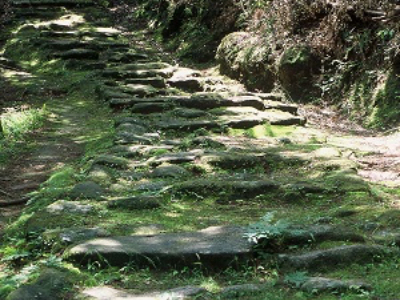
Kamakura Period Stone Path
This is a stone path dating from the Kamakura period, making it the oldest stone path on the Iseji Route. The stones used to pave paths in those days were much larger than those used in later periods, making it easy to distinguish from roads paved in the Edo period (1603‒1868).
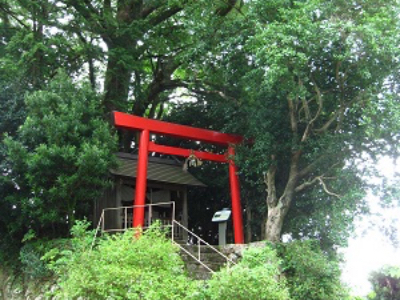
Jofuku Shrine
Emperor Qin's doctor, Jofuku, came seeking the elixir of life and imparted knowledge of the advanced civilization of China to the locals. Even when Japan went to war with China 100 years ago, the locals' reverence for Jofuku never wavered.
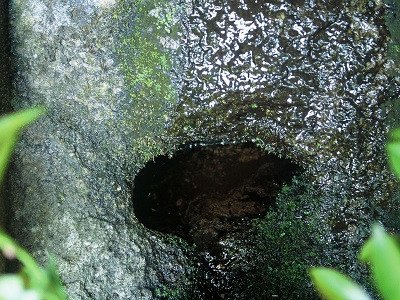
The Footprint Spring
The famous Buddhist monk, Kobodaishi (founder of Koya-san), is said to have left a footprint in the stone here where this hole is. The holy water here never dries up and is said to cure anything that ails you.
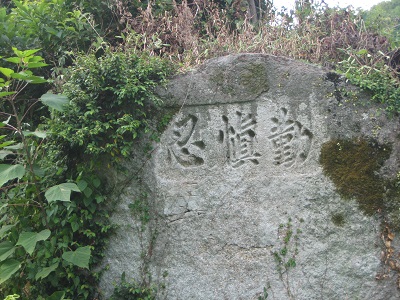
The Inscribed Stone
There is a big rock in front of the house of a lord that ruled here long ago. A couple, whom the lord had wronged before settling here, had sought him out to seek revenge, but the lord retaliated when they attacked. He reflected on this tragedy and had these characters carved on this rock: Kin - diligence, Shin - prudence/moderation and Nin – endurance through humiliation.

Shishigaki
Just before you get to the pass, you will see a stone fence erected in the Edo period to protect crops from wild boars and deer.
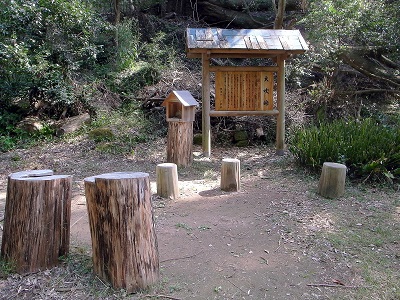
Obuki-toge Pass
The Obuki Teahouse operated here until about 1950. They would wrap rice balls and sushi in the leaves of plants - called "baran" and "hanamyoga" - which they planted here. The teahouse is long gone, but the plants remain.

Odomari Beach
The beautiful sand beach, the Mamirugashima and Hakoshima islands off the coast, and the rocky point called Onigajo (Demon's Castle) make for a breathtaking view.
Road trip to Kumano Kodo
距離 約5km(JR新鹿駅〜JR波田須駅) 歩行時間 3時間 駐車スペース【JR新鹿駅側】○JR新鹿駅(駅から徒歩すぐ)
【JR波田須駅側】○大吹峠口(波田須側)(駅から徒歩40分/バス停から徒歩すぐ)
◆マイカーで来訪での歩きイメージ◆
Aパターン
START 新鹿駅に駐車
⇓
新鹿方面~波田須方面へ歩く
⇓
【波田須駅】または《大吹峠口(波田須)バス停》
⇓【列車】or《バス》
【新鹿駅】または《新鹿駅前バス停》
⇓
GOAL 駐車場に戻る
Bパターン
START 大吹峠口(波田須側)の駐車場に駐車
⇓
《大吹峠口(波田須)バス停》
⇓《バス》
《新鹿駅前バス停》
⇓
新鹿方面~波田須方面へ歩く
⇓
GOAL 駐車場に戻る
Other routes on the Kumano Kodo Iseji Trail

